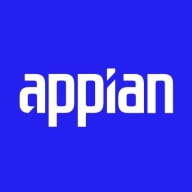

Appian and Jigx compete in the automation and app development space. Appian is perceived to have the upper hand due to its broader utility and extensive features, while Jigx offers a budget-friendly option with advantages in quick deployment and specific app needs.
Features: Appian provides robust workflow automation, integration capabilities, and complex process management. It offers a powerful feature suite beneficial for comprehensive business process automation. Jigx offers strong customization with rapid development suitable for targeted app development, though it may lack the depth found in Appian.
Ease of Deployment and Customer Service: Appian has a structured deployment model, thorough documentation, and support, which may extend implementation time but ensures stability. Jigx supports quicker deployment with an intuitive setup and responsive customer service, ideal for businesses seeking a fast turnaround.
Pricing and ROI: Appian involves higher setup costs, aiming for long-term returns through extensive functionality. Jigx offers a more cost-effective setup with potential for quicker ROI due to its rapid deployment and focused solutions, appealing to budget-conscious businesses with immediate requirements.

Appian is a unified low-code platform and solution used by businesses to build enterprise applications and workflows. This product adapts to the needs of clients and the technologies they are already using to combine their data in a single workflow and maximize resources. The platform has four main components through which it transforms the work process for companies of various sizes. They are:
Appian is utilized across a diverse set of industries, including automotive and manufacturing, energy and utilities, education, financial services, telecom and media, transportation, retail, insurance, healthcare, and life sciences. The most frequent use cases of Appian are customer journey, governance, risk and compliance, operational efficiency, supply chain, distributed order management, and environmental, social, and governance (ESG) management.
Appian Features
Appian has various features that allow users to create solutions for their businesses. These features can be separated into a few groups according to function, including automation, low-code application development, and integrations and data. Some of the most frequently used features of Appian include:
Appian Benefits
The benefits of using Appian include:
Reviews from Real Users
A practice leader - digital process automation at a computer software company values Appian highly because the product is easy to develop, low-code, and has a good user interface.
Alan G., an advisory board member at Codecon VR, Appian offers a clear application life cycle, easy to learn documentation, and comes with a fundamentals course.
Jigx is used for developing mobile applications and enhancing business processes, allowing for rapid app deployment and integration with existing systems, offering robust customization options.
Jigx supports workflow automation and improves team collaboration by simplifying project management. It is recognized for flexibility and scalability in meeting dynamic business requirements. Customers value its ease of use, excellent customer support, and extensive customization options. However, Jigx requires improvement in performance, load times, responsiveness, and more intuitive functionality. Some features need depth and consistency, and enhanced support with clearer documentation could aid in better understanding and utilization.
What are Jigx's most important features?Jigx is implemented across industries such as healthcare, finance, and retail, simplifying complex business processes, improving communication, and enabling rapid development and deployment of mobile applications tailored to specific industry needs.
We monitor all Low-Code Development Platforms reviews to prevent fraudulent reviews and keep review quality high. We do not post reviews by company employees or direct competitors. We validate each review for authenticity via cross-reference with LinkedIn, and personal follow-up with the reviewer when necessary.